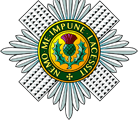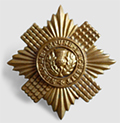Lieutenant Roderick Campbell McLeod
Service Number 186926
Campaign:
World War 2
Died:
11.9.1943
2SG
KIA Aged 21
Buried at Salerno War Cemetery, Italy. II, A, 36
Roderick Campbell McLeod was born 4 October 1921, the elder son of Sir Murdoch Campbell McLeod, 2nd Baronet (G 1907-1912), of Culverlea House, Pennington, Hampshire,and formerly of Ashley Hill House, Clarendon, Salisbury. His mother, Lady McLeod, was born Annette Susan Mary Whitehead, daughter of Henry Whitehead. He was the brother of Charles Henry McLeod (G 1938-43).
McLeod came to Winchester College from Abberley Hall in January 1935 and was in G House, Sergeant's. He stood On dress for Commoner XV, gained his Flannels for cricket, and was a Sergeant in the Corps.
He left Winchester in the summer of 1940 and went into the Scots Guards via Caterham, receiving his commission as a Second Lieutenant in May 1941. On one occasion he brought down his platoon to give the school a demonstration of drill, with the help of the Regiment’s Pipe Band. He went out to join 2nd Battalion, Scots Guards, in Palestine in 1942. Also serving with the battalion at that time was fellow Wykehamist, Lieutenant (later Major) Adrian John Anthony Weir (B 1933-1939), who was later to be killed with 1st Scots Guards at Anzio (see individual entry). Both were in ‘F’ Company. In Left Flank Company (the battalion’s anti-tank specialists), Lieutenant John David Adam Stainton (K 1934-1939) commanded a platoon of four anti-tank guns.
2nd Scots Guards moved the two thousand miles from Palestine to Tunisia in February 1943, arriving at the front at the start of March, just in time to start preparations to defend against an expected attack at Medenine. The attack, when it came, was defeated and 12 enemy tanks were destroyed. McLeod was wounded in an action near Gebel Saikra on 28 March.
In July 1943 he took part in the landings on the Italian mainland at Salerno. 2nd Scots Guards landed next to the mouth of the river Tusciano, and overnight moved to Verdesca, about three miles from a set of buildings known as the ‘Tobacco Factory’, which commanded the German supply route along the coast. It was in fact a tomato-processing plant, south of which lay a railway line and a barracks, described as 'A naturally strong position, surrounded by a spiked iron railings eight feet high, this combined barracks and factory area had been further strengthened by being divided by wire into a series of separate strongpoints. It covered an area of about three-and-a-half acres'.
On 10 September 1943, they attacked in daylight, without artillery support. Just as the attack began, Battalion HQ was hit by a shell and several officers, including the Adjutant, were killed or wounded. A second attempt to capture the Tobacco Factory was made the following night, but McLeod's F Company was confronted by tanks as well as intense infantry fire, and was eventually over-run with fewer than twelve guardsmen escaping capture.
McLeod was one of those who had been killed, as his Commanding Officer described: 'Roderick died very gallantly while charging an enemy machine gun post during a night attack. He got to within a few yards of the objective, actually throwing his grenades, when he was killed instantly along with two of his men by a burst of machine-gun fire. We shall miss his charming personality more than I can say; his men will miss a trusted leader, and the Regiment has lost a most efficient and promising young officer'.
It was decided to withdraw and so shorten the front line, and so on Sunday 12 September, as darkness fell, the Guards withdrew. McLeod had died at the age of twenty-one, and was originally posted missing in action. Confirmation of his death came very rapidly, and he is buried in grave II.A.36 of the Salerno War Cemetery.
Memorial(s):
| Country | Location | Name of Memorial | Campaign | Names | Date(s) | |
|---|---|---|---|---|---|---|
| England | Winchester College College Street Winchester SO23 9NA | Winchester College WW1 and WW2 | World War 1 World War 2 |
Roderick McLeod | 11-9-1943 | View |
Further information:
Find more information about a specific soldier visit findmypast. The Scots Guards are delighted that their Enlistment Books from 1840 to 1938 are now available at:

If you have information on a specific memorial please send it on to the Historical Committee. The Memorial information required is:
- Who or what formation of the Regiment is named on the memorial. What event, dates or other inscriptions on the memorial.
- The country, nearest town/city or other details of location.
- A description of the memorial with a photograph if possible.
- For bigger sites a copy of any advertising information or leaflets would be useful.
Please sent any information that you find to: Michael Campbell-Lamerton
As the information on the database builds up Michael Campbell-Lamerton will be sending regular updates to Archives at RHQ who remains the point of contact about for inquiries on past members of the Regiment.


